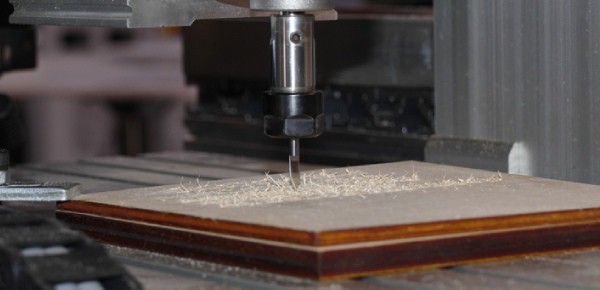CNC wood routers are the woodcarving kings, capable of turning a piece of wood into nearly anything you can imagine. And thanks to the huge improvements in CNC technology, and a dramatic increase in the availability of these machines, more people than ever before can own and operate a CNC wood router.
If you’re one of those people, you may have a new question – what do you do with your new CNC machine? Where do you find the plans and ideas for new CNC projects?
A lot will depend, of course, on what you’re trying to do with your new CNC router. Are you making projects to sell online, or is this simply a hobby? You’ll find a difference in the type of projects you’ll need to do for each.
Whether you’ve got your own woodworking shop or just enjoy doing projects on the side, you’ll find some great ideas for your next project on this list.
We’ve purposefully kept these projects mostly “flat” – i.e., they’ll rely more on cutting on a single plane than on any sort of 3D project. That’s not to say that they’ll be without any detail; as a CNC owner, you’ll eventually be able to produce objects that are incredibly detailed.
These projects are listed, in general, from simpler to more complex. It’s important to note that these are general categories, and a skilled woodworker can use advanced techniques to produce an impressively complex bottle opener mount. However, as far as basic ideas go, these are listed from easier to harder.
Common CNC projects
Bottle opener
You can find the hardware for a DIY bottle opener very easily, and creating the wooden shape on which to mount the hardware is a great way to test out your new router. The only limit, really, is your own imagination. You can do a simple rectangle, or a logo, or the outline of your home state, or really anything you can imagine. If this is your first project, use a simple piece of nicer plywood – birch plywood is a good example – to practice.
Flags
A good old United States flag looks equally great in your online shop or on your wall, and by adding some detail in the stars and stripes, you can begin to expand your capabilities a bit. Not from the USA? Writing new programs and new tool paths for other country flags will challenge your abilities and deepen your knowledge of CNC programming.
Signs
Personalized wood signs make fantastic gifts for friends and family. They can also be products to go on the front of your online shop. There’s a huge range of possibilities. Custom signs for home bars and backyard BBQs are great places to start, as well as more ornate signs with logos for small businesses and shops.
Maps
Using your CNC router to make a woodcut map opens a whole new world of possibilities. You can do something simple – just a basic outline of your country or state – or something more complicated, like a topographical map. This is another project that can be as easy or challenging as you want. You can vary the level of detail and the size of the map to make something small and easy to ship for your online shop, or an ornately-rendered map of your home country to decorate your wall.
Cutting boards
Cutting boards seem simple, and indeed they are – a relatively basic shape with a small cutout to hang it. But precisely because they are so simple, cutting boards are a great way to demonstrate the quality of your work. They also work fantastically to showcase particularly nice patterns or colors in your wood, and they’re sure to be popular items in your shop – not to mention handy items around the house.
Popular materials for CNC router projects
Most of the projects mentioned above rely on workpieces that are flatter and wider in dimension rather than large blocks.
Plywood
Plywood works well for a lot of these projects; birch plywood is known for its use in woodworking projects (as opposed to more standard construction-grade plywood). Plywood, in general, is composed of several layers of wood panels or veneers.
Baltic birch
Baltic birch originated in the Baltic states of Europe – Norway, Sweden, Denmark, and the surrounding countries. Baltic birch is often used in European cabinetry and furniture making, and has recently become more popular in the U.S. It differs from typical birch plywood in that each layer of the Baltic product uses solid wood veneer. The resulting plywood is void-free and stronger, resulting in cleaner joints and edges.
Solid hardwoods
For higher-end applications like cabinet doors, most woodworks prefer higher-quality woods. Hardwoods like maple and oak might require special tools and bits to cut, but the results can be especially impressive.
Plans, resources, and files
CNC machines use G-code programs to execute specific instructions, along with Computer Assisted Design (CAD) programs to help create those programs. CNC router owners either need to learn how to program their new routers, or rely on pre-written programs. Fortunately, there are several resources out there that provide existing CNC programs for free. These are some good places to get started:
Vectric
Openbuilds
For even more resources, check out any Facebook groups for CNC woodworking or CNC routers, and look at online forums for woodworkers or CNC operators. You can also check the manufacturer’s site for your CNC machine; often, they’ll include valuable resources.
CNC routers open up a new world of projects for experienced and new woodworkers alike. Use these five projects to get started and to introduce yourself to new techniques and tools with your new router.














































































